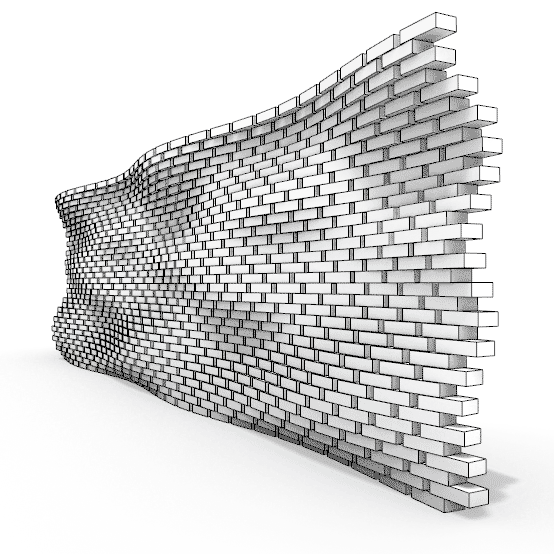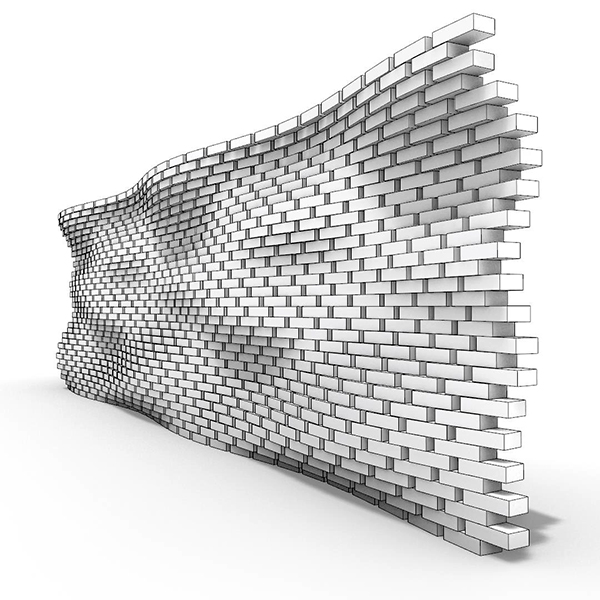Parametric Brickwork
by Tuğrul Yazar | January 7, 2013 00:21
You might recall this type of parametric brickwork from architectural classics, such as the Programmed Wall[1] by ETH Zurich and Gramazio Kohler Research, or the facade of the Mulberry House[2] by SHoP Architects. Initially, I explored the simplest method for placing boxes on a surface, but this approach didn’t yield the correct layout. To improve it, I introduced gaps, which not only liberated the wall’s design but also opened up exciting possibilities for manipulating the “gap” parameter and brick sizes. In Grasshopper, the main challenge of this definition revolves around the organization and layout of the bricks. These gaps are crucial not just because they lighten the wall, but also because they simplify the calculation of brick positions, eliminating concerns about collisions. The final version even incorporates a portion of my breaststroke surface equation[3] to generate a waving reference surface.

This Grasshopper definition models a parametric brick wall. It takes the surface that the algorithm follows and parameters related to brick and layout sizes as inputs. The final version also features a warning system, where red bricks indicate those at risk of falling. The outputs of the definition include a 3D model of the layout. For further development, a labeling system could be added to enhance productivity. However, the current version does not yet include such documentation.
 [4]
[4]You can rebuild this definition by looking at the dataflow diagram above. You can click on it to enlarge it. However, if you want to download and use my Grasshopper file; would you consider being my Patreon? Here is the link to my Patreon page[5] including the working Grasshopper file for the Parametric Brickwork, and many more.

- Programmed Wall: https://gramaziokohler.arch.ethz.ch/web/e/lehre/81.html
- Mulberry House: https://www.shoparc.com/projects/mulberry-house/
- breaststroke surface equation: https://www.designcoding.net/breaststroke-surface/
- [Image]: https://www.designcoding.net/decoder/wp-content/uploads/2013/01/Parametric-Brickwork-def.jpg
- Here is the link to my Patreon page: https://www.patreon.com/posts/parametric-82469619?utm_medium=clipboard_copy&utm_source=copyLink&utm_campaign=postshare_creator&utm_content=join_link
Source URL: https://www.designcoding.net/parametric-brickwork/